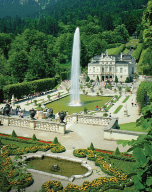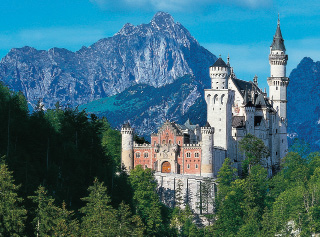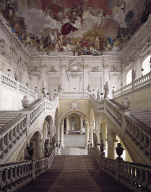


![]()
ONLINE

Rent a Castle for Your Meeting
Editors’ Note
From 1976 to 2001, Dr. Johannes Erichsen worked for Haus der Bayerischen Geschichte (House of Bavarian History) in Munich and Augsburg. From 1994 to 1997, he worked in Mecklenburg-Vorpommern, where he was responsible for the state exhibition “1000 years of Mecklenburg” in Güstrow. He also was in charge of the Project Peenemünde on the island of Usedom. In 2001, he became Head of the Museum department of the Bavarian Administration of State-owned Palaces, Gardens and Lakes (Bayerische Schlösserverwaltung) in Munich. He was appointed Vice President in 2005. In 2008, Erichsen was appointed President of the Bavarian Administration of State-owned Palaces, Gardens and Lakes, situated in the palace of Nymphenburg in Munich. He studied History of Art, History and Archeology in Bonn and Cologne, and received his Ph.D. at the University of Cologne in 1975.
administration Brief
Also known as the Palace Department, the Bavarian Administration of State-owned Palaces, Gardens and Lakes (www.schloesser.bayern.de) is one of the most traditional administrative departments in the Free State of Bavaria, and is today the largest public authority responsible for museums in Germany, managing 45 palaces, castles, and residences. It evolved from the court administration of Bavaria, and is also responsible for a very special historical heritage: the many magnificent court gardens, palace parks, gardens, and lakes. The ensembles of European architecture and artistic interiors attract over five million visitors annually from all over the world.
You’re in charge of all of the castles in Bavaria that are owned by the government. How many are there?
We have 40 castles and some monuments, as well as two artist houses, for a total of 45.
Are Neuschwanstein and Linderhof the two most famous?
They are at least the most visited. Disney’s castles looks like Neuschwanstein because Disney’s artists knew Neuschwanstein. But we have other important palaces like the Würzburg Residenz, which display some of the most beautiful frescoes by the Venetian Giovanni Battista Tiepolo, or Munich Residenz with its splendid objects from the Bavarian court. Public interest is not always congruent with the real historical or artistic importance of an object. So everybody goes to Neuschwanstein and most people are astonished when they learn the castle dates from the 19th century.

Linderhof Palace
So most tourists from overseas don’t know about the treasures and where the castles are?
They don’t know, but we have so many, and they are so different because they reflect the total of Bavarian history. You cannot expect that anybody knows all of our castles.
Is it possible for a corporation or an organization to rent a portion of a castle for meetings, dinners, or galas?
Yes, they can, and we hope they would, because we earn a lot of money from those activities. We are a state-dependent organization that depends on funding from the Ministry of Finance. They expect us to finance a lot of things ourselves, so we are very anxious for all revenues. We actually cover about 95 percent of our regular expenses through our own revenues. Still there is investment for upkeep of the buildings. But even if you take this upkeep money into account, we still cover more than 50 percent ourselves. With a budget of about $130 million a year, we could not get all that from entrance fees.
What kind of facility can a company or organization rent, and can the events be catered?
We have a whole list, which you can find on the Internet, whether you need a room for 1,500 or for 15. We have some appointed caterers because these buildings are sometimes rather difficult to host events in. There are also other differences. For some rooms, use is only consented by the ministry; other rooms are reserved for the Minister President, but we usually have a room in every facility which can be utilized.

Neuschwanstein Castle
As an art historian, you must have both challenging and rewarding moments in dealing with the treasures you manage?
When we discover beetles below our carpets, or hear of buildings crumbling and have to repair them right away, our task can be rather difficult, because we normally don’t have enough money to care for this. On the other hand, when we get an idea about how to demonstrate a certain thing or how to restore a room or how to reinvent a situation, this can be a rather nice job. And if somebody calls and tells us that, if we do the job right, they will give us money or a collection of things, those are star hours, as we say.

Würzburg Residenz stairway
Are the lakes and parks equally as popular?
There are enormous public and famous objects which nobody realizes are our property. For instance, the English Garden in Munich, which was built as a great public park at the end of the 18th century. If you were to go to the English Garden one day, you would find a park as overcrowded as Central Park in New York, but nobody realizes this is a park that belongs to our organization.
This park also has a famous wave for surfing. There is a small river that runs very fast through the park with a standing wave which doesn’t move, brought in by a subterranean channel. Surfers from all over the world come to surf this because there is nothing comparable to it.
What is it that you would like our audience to remember about your Bavarian treasures?
We have lots of wonderful old-world treasures. In our castles, you can admire splendid works of art. But you can also learn a lot about bygone days and princely court life, and the history of Germany, and you can realize the cultural exchange so characteristic for the middle of Europe. Our castles are mirrors of the past – a splendid past, indeed, which still is an integral part of our culture. •